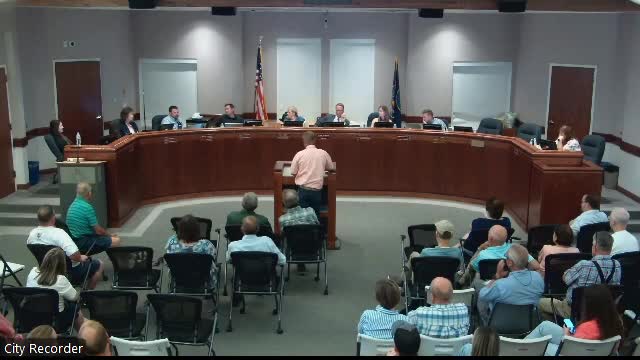City grapples with tree roots damaging vital utilities
August 21, 2024 | Centerville City Council, Centerville, Davis County, Utah
This article was created by AI summarizing key points discussed. AI makes mistakes, so for full details and context, please refer to the video of the full meeting. Please report any errors so we can fix them. Report an error »

During a recent city council meeting, officials discussed the complexities surrounding tree management in park strips, particularly in relation to road widening projects and utility infrastructure. The conversation highlighted the legal responsibilities of property owners regarding trees planted in these areas, especially when such trees cause damage to public utilities.
Council members noted that under existing case law, if a tree planted by a homeowner damages public property, the homeowner is liable for the costs associated with the damage. This includes potential damage to newly installed fiber optic lines, which have been laid beneath park strips. The discussion raised questions about the depth of utility lines, with officials confirming that the minimum depth for utilities like fiber is typically around 24 inches, although this can vary by type.
The council acknowledged the challenges posed by tree roots, which can interfere with utility access and maintenance. Historical examples were cited where roots had to be cut away to repair damaged infrastructure, emphasizing the destructive nature of older trees on utilities. Despite these challenges, some council members expressed a desire to protect mature trees, recognizing their value to the community and the environment.
The meeting also touched on the broader issue of funding for road and sidewalk maintenance, with officials admitting that current budgets are insufficient to maintain the extensive network of roads and sidewalks in the city. This lack of funding complicates efforts to ensure safety and accessibility for all residents.
As the council continues to navigate these issues, the balance between urban development, infrastructure maintenance, and environmental stewardship remains a critical topic of discussion. The meeting underscored the need for a comprehensive approach to managing park strip trees while considering the long-term implications for the community.
Council members noted that under existing case law, if a tree planted by a homeowner damages public property, the homeowner is liable for the costs associated with the damage. This includes potential damage to newly installed fiber optic lines, which have been laid beneath park strips. The discussion raised questions about the depth of utility lines, with officials confirming that the minimum depth for utilities like fiber is typically around 24 inches, although this can vary by type.
The council acknowledged the challenges posed by tree roots, which can interfere with utility access and maintenance. Historical examples were cited where roots had to be cut away to repair damaged infrastructure, emphasizing the destructive nature of older trees on utilities. Despite these challenges, some council members expressed a desire to protect mature trees, recognizing their value to the community and the environment.
The meeting also touched on the broader issue of funding for road and sidewalk maintenance, with officials admitting that current budgets are insufficient to maintain the extensive network of roads and sidewalks in the city. This lack of funding complicates efforts to ensure safety and accessibility for all residents.
As the council continues to navigate these issues, the balance between urban development, infrastructure maintenance, and environmental stewardship remains a critical topic of discussion. The meeting underscored the need for a comprehensive approach to managing park strip trees while considering the long-term implications for the community.
View full meeting
This article is based on a recent meeting—watch the full video and explore the complete transcript for deeper insights into the discussion.
View full meeting

